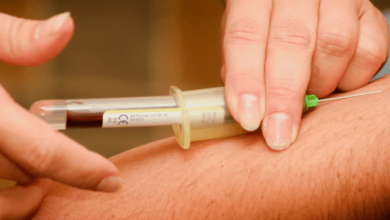Tips for Using SMBG Effectively to Manage Your Diabetes

Living with diabetes can be challenging, but it doesn’t have to be. Self-monitoring of blood glucose (SMBG) is a vital tool that can help you manage your condition effectively. It involves testing your blood sugar levels regularly and using the results to adjust your diet, medication, and lifestyle accordingly. In this blog post, we’ll explore what it is, why it’s important for people with diabetes, and some tips on how to use SMBG effectively. So grab a cup of tea or coffee and read on to learn more about how you can take control of your diabetes with it!
What is SMBG?
Self-monitoring of blood glucose (SMBG) is a process that involves testing your blood sugar levels at home, outside of a medical setting. It enables people with diabetes to monitor their condition and make informed decisions about their health based on the results.
Typically, it involves using a small device called a glucometer to measure your blood sugar level from a drop of blood taken from your finger or another part of your body. The test can be done in seconds, and the results are displayed on the meter’s screen.
By monitoring their blood glucose levels regularly with it , people with diabetes can detect any fluctuations in their levels quickly. This information helps them adjust their diet, medication, exercise routine or other aspects of daily living according to what works best for managing their diabetes.
Why is SMBG Important?
Self-monitoring of blood glucose is a crucial component in the management of diabetes. It involves checking your blood sugar level at regular intervals throughout the day using a glucometer. But why is this important?
First and foremost, it allows you to keep track of your blood sugar levels, which can help prevent complications associated with high or low levels such as nerve damage, kidney disease, stroke, and heart attack.
By monitoring your blood sugar levels multiple times a day, you can identify patterns and adjust your treatment plan accordingly. This may include changes to medication dosages or adjusting your diet and exercise routine.
Regularly it also helps you take ownership of managing your diabetes by providing valuable information on how different factors affect your blood sugar levels such as stress, illness, or even alcohol consumption.
Furthermore, it gives healthcare providers more accurate information about how well treatments are working for patients. By having access to detailed data on glucose fluctuations over time they can make better-informed decisions about treatment plans.
How to Use SMBG Effectively
When it comes to effectively managing your diabetes, the proper use of it (Self-Monitoring Blood Glucose) is crucial. However, it’s not just about testing your blood sugar levels – it’s also about understanding and utilizing the results in a way that benefits your overall health.
Firstly, make sure you have an accurate and reliable glucose meter. Test your meter with a control solution regularly to ensure its accuracy.
Secondly, establish a regular testing routine based on your healthcare provider’s recommendations. Consistency is key when using it as part of a treatment plan for diabetes management.
Make sure to record all test results in a logbook or app so that you can track trends over time and identify patterns such as high or low blood sugar levels at specific times of the day.
It’s important to review these logs with your healthcare provider during check-ups so they can adjust medications or provide additional guidance based on the data collected.
In addition, it should be used in conjunction with other aspects of diabetes management such as diet and exercise modifications. Make sure to communicate any changes made with your healthcare team for optimal care.
Tips for Using SMBG Effectively
Here are some tips for using it effectively to manage your diabetes:
1. Understand Your Target Blood Sugar Levels
Before you start monitoring your blood sugar levels, it is essential to know what the target range is for you. It may vary depending on factors like age, overall health, and the type of diabetes you have. Consult with a healthcare provider who can guide you in setting realistic targets.
2. Keep a Record of Your Readings
Maintain a record of all your readings in a logbook or diary where you can note down details like the date and time of testing as well as any notes about food intake, exercise routine, medications taken that day etcetera. This will help track patterns over time.
3. Test Often But Not Too Much
Testing often ensures that blood sugar levels remain within range but too much testing can be harmful leading to finger damage and increased costs involved due to frequent test strips buying so always ask your doctor how many times per day should one test.
4. Clean Hands Before Testing
Always clean hands before conducting tests because dirty hands could affect results indicating higher than actual glucose level which leads to incorrect dosage adjustments affecting management plans
5. Put Results into Action
Finally put results into action by taking medication when needed adjusting diet if necessary exercising regularly keeping stress at manageable levels helping maintain good control over diabetes through SMBG use. Read more…
Conclusion
SMBG is an essential tool for managing diabetes effectively. By regularly monitoring your blood sugar levels, you can adjust your diet, medication, and exercise to keep them within a healthy range. Remember to always follow the recommended testing schedule and log your results accurately. If you notice any drastic changes in your readings or have concerns about using it, consult with your healthcare provider immediately.
With the tips outlined in this article and a commitment to regular testing, you can take control of your diabetes management and improve your overall health and well-being. Don’t let diabetes hold you back – start using it today!




